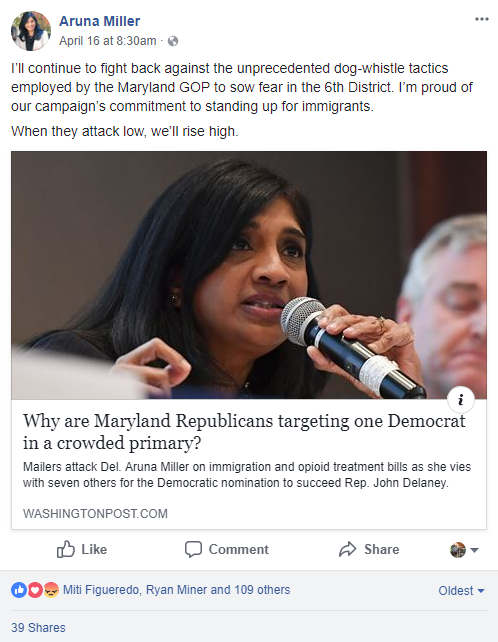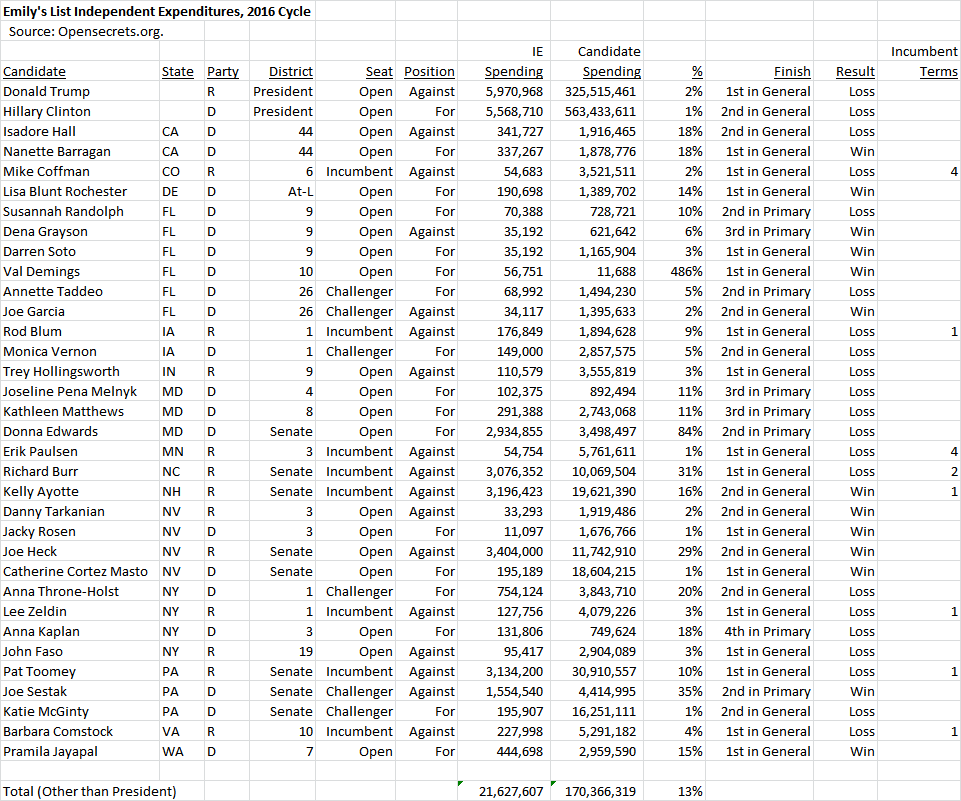By Adam Pagnucco.
Much has been said about the Maryland Republican Party sending out racist mailers targeting Congressional District 6 candidate Aruna Miller. The standard interpretation of this seems to be that the GOP sees Miller as a strong candidate and is trying to keep her out of the general election. Indeed, the Washington Post editorial board made that argument. But what if the Republicans are actually trying to help Miller instead?
The classic example of intervention in an opposing party’s primary is Missouri Senator Claire McCaskill’s promotion of conservative GOP Representative and eventual opponent Todd Akin. McCaskill spent $1.7 million on ads accusing Akin of being “too conservative” during his GOP primary, helping boost him past the rest of the field. And that’s not all – when Akin pulled a successful TV ad in favor of one that flopped, McCaskill schemed to have her pollster contact Akin’s campaign to persuade him to re-run the high-performing ad. Once Akin won his primary, McCaskill exploited his weaknesses to finish him off and get reelected.
Two “anti-Akin” ads by McCaskill and the Democratic Senatorial Campaign Committee.
Why do we bring this up? Some of the people who received the GOP mailers were female Democrats, including Miller herself. A few took to Facebook and Twitter to complain about it. And if they didn’t get them directly, they may have read about them in publications like the Washington Post, Bethesda Magazine and India West. How do you think they are going to react when they see a female Democratic candidate getting bashed in racist mail sent by Republicans? They are going to rally to Miller, of course, and that’s what happened on social media. Maybe that’s the point.
Miller uses GOP racism to motivate her supporters.
Aruna Miller is doing really well in this campaign. She is raising lots of money, doing well at forums, attracting great endorsements from the Sierra Club and the teachers and is the most prominent woman running in a primary electorate that is roughly 60% female. But look at this race from the standpoint of the GOP. They know David Trone won an absolute majority of the vote in rural Frederick and Carroll Counties in the CD8 primary – the kind of areas that Republicans need to dominate in the sixth district. They know Trone could spend $10 million in a general election, something no other Democrat can do, and that would free up national Democratic money to go to other Congressional districts around the country. Most of all, Trone looks more like incumbent Congressman John Delaney than any other candidate – a center-left businessman who says he has created thousands of jobs. The GOP knows that kind of candidate can win in this district. Why would they want another one like Delaney? And if they don’t, why not help a rival win?
Maybe we’re reading too much into this but we don’t think the GOP is stupid. This kind of tactic can work. Just ask Claire McCaskill!






